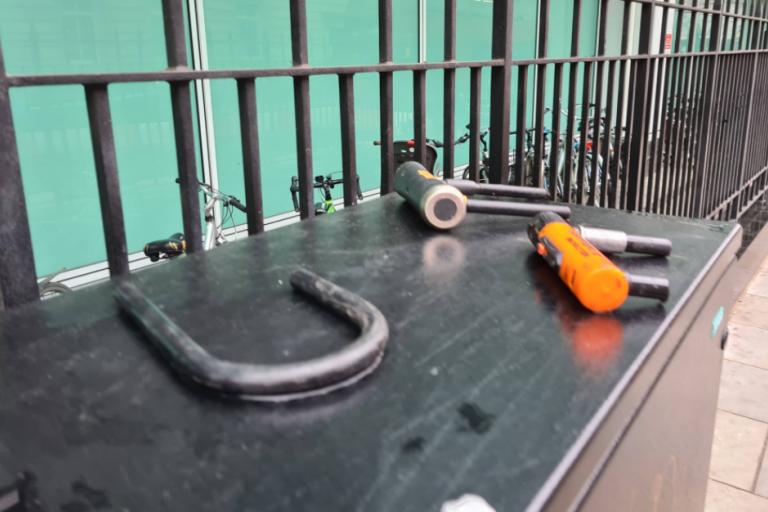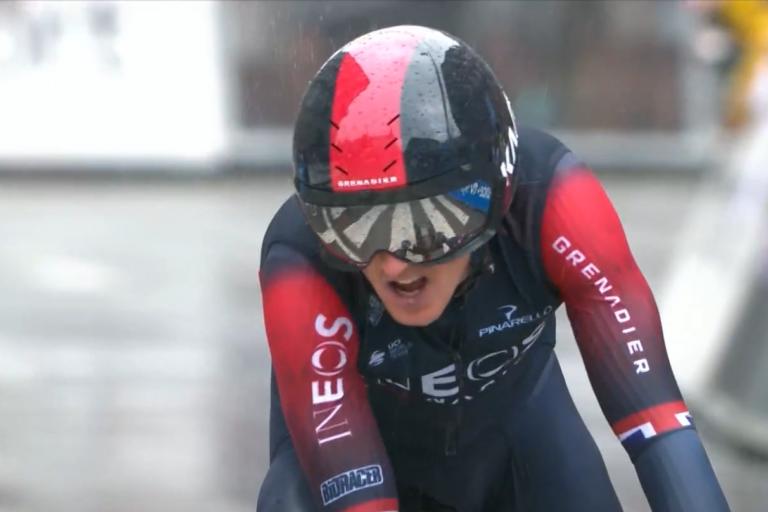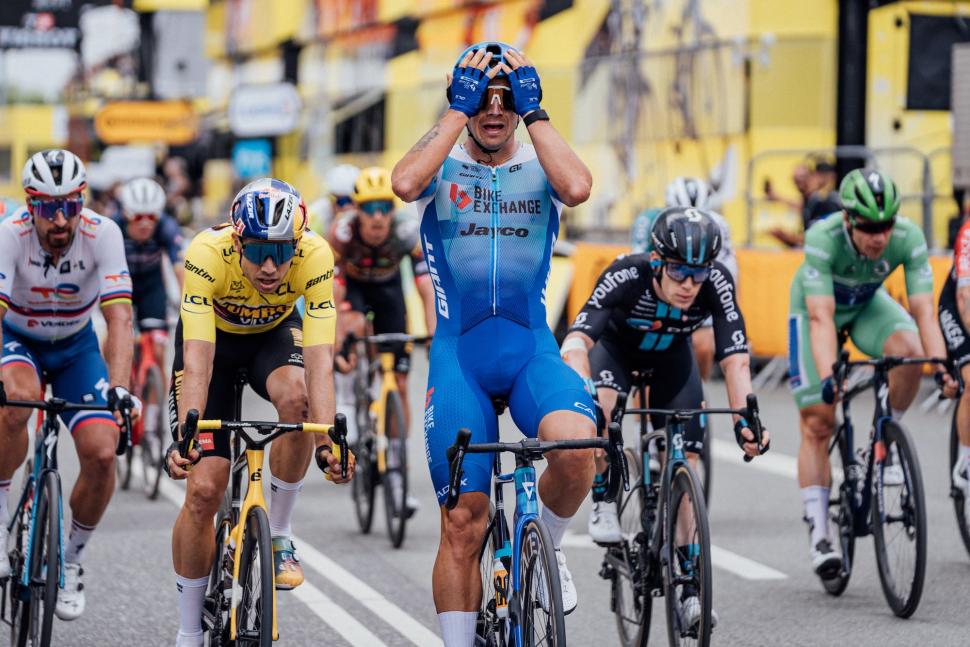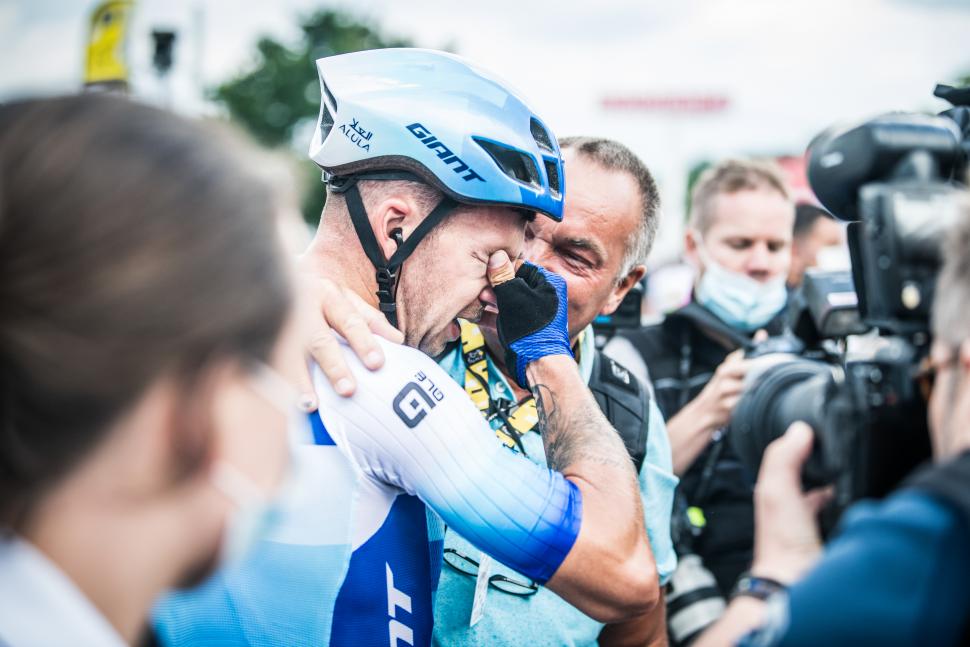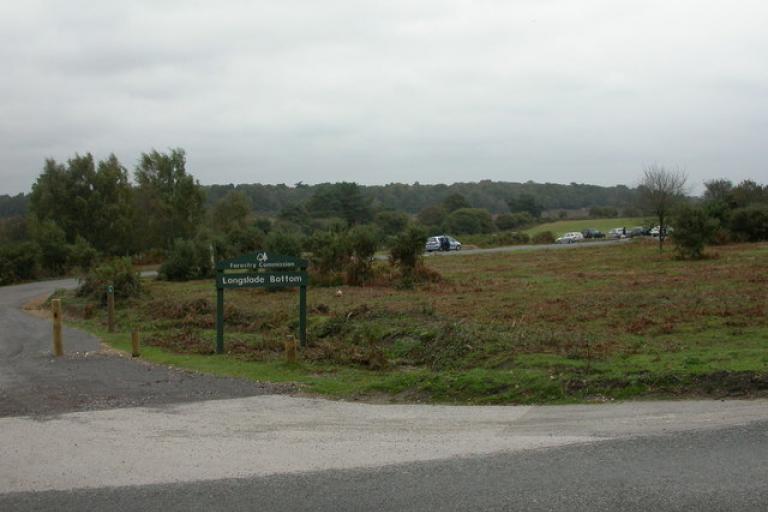- News
- Reviews
- Bikes
- Accessories
- Accessories - misc
- Computer mounts
- Bags
- Bar ends
- Bike bags & cases
- Bottle cages
- Bottles
- Cameras
- Car racks
- Child seats
- Computers
- Glasses
- GPS units
- Helmets
- Lights - front
- Lights - rear
- Lights - sets
- Locks
- Mirrors
- Mudguards
- Racks
- Pumps & CO2 inflators
- Puncture kits
- Reflectives
- Smart watches
- Stands and racks
- Trailers
- Clothing
- Components
- Bar tape & grips
- Bottom brackets
- Brake & gear cables
- Brake & STI levers
- Brake pads & spares
- Brakes
- Cassettes & freewheels
- Chains
- Chainsets & chainrings
- Derailleurs - front
- Derailleurs - rear
- Forks
- Gear levers & shifters
- Groupsets
- Handlebars & extensions
- Headsets
- Hubs
- Inner tubes
- Pedals
- Quick releases & skewers
- Saddles
- Seatposts
- Stems
- Wheels
- Tyres
- Health, fitness and nutrition
- Tools and workshop
- Miscellaneous
- Tubeless valves
- Buyers Guides
- Features
- Forum
- Recommends
- Podcast
news
Active travel advocates slam phone-driving fuel ‘go slow’ van driver; Fabio Jakobsen: Admiration for Groenewegen is “completely gone”; Best Tour Grand Départ ever?; Pogačar raps; Van Vleuten stamps authority on Giro Donne + more on the live blog
SUMMARY
 Phone-driving go slow lorry driver (credit - Conor Gogarty, Twitter)
Phone-driving go slow lorry driver (credit - Conor Gogarty, Twitter)04 July 2022, 16:49
Ay up! Yorkshire still top of Grand Départ charts
Sorry Denmark, you were great, but the people have spoken…
04 July 2022, 16:40
Total Cycling at the Giro Donne
"Johan Cruyff always said: Attack is the best way to defend" ⚽️🤝🚴♀️
Annemiek van Vleuten is sticking with the advice of another Dutch sporting legend at the Giro Donne 🇳🇱#GiroDonne22 | @AvVleuten pic.twitter.com/wu6BFLuZEs
— Eurosport (@eurosport) July 4, 2022
04 July 2022, 15:43

Bikepacker aims to complete all three grand tours (plus transfers)… as training for ‘Pedal Around the World’ attempt
While the Tour de France peloton boarded flights from Denmark to northern France on Sunday evening, their team managers, mechanics, soigneurs and press officers took on a rather more gruelling 900km-long road trip through Germany and Belgium on the way to Dunkirk.
One cyclist, however, is taking things a step further. As well as riding each stage of this year’s Tour, adventure cyclist Paul Spencer is also taking on the transfers by bike.
Not only that, he’s doing the full Adam Hansen and riding each of the three grand tours this year, having already completed the Giro d’Italia route in May. He aims to start and finish each grand tour the same day the pro riders do, and will catch as many stages as he can by the side of the road.
With all three grand tours this year featuring far-flung starts (in Hungary, Denmark and the Netherlands respectively), he will have completed 13,500 miles, with over 88,000 feet of climbing, by the time the Vuelta finishes in Madrid in September.
Paul will be riding all three routes completely unsupported (all his equipment and kit can be seen in the above photo) and won’t even contemplate entering a car at any point during his epic rides.
And just to make you feel even worse when you’re enjoying the Tour from the comfort of your sofa, Paul’s attempt at a bikepacking grand tour triple crown is mere training for his “ultimate goal”, which is to break the Guinness World Record for the fastest human powered circumnavigation of the globe, by cycling across the land and using a pedal boat on the oceans.
I guess Alpe d’Huez is only a warm-up then…
You can keep track of Paul’s frankly mad endeavour on Trackleaders.
04 July 2022, 15:31
The REAL Tour de France preview...
04 July 2022, 15:20
Please sir, can we have our ball back?
Speaking of MVDP, here’s the Dutch superstar doing his best Peter Kay impression…
Wat kan die fietsen hè die @mathieuvdpoel!😂⚽️ #TDF2022 pic.twitter.com/hTzRwgS4RS
— Bas Tietema (@BasTietema) July 3, 2022
04 July 2022, 15:00
Contract Extensions, ‘Dude, Where’s My Car?’ style
Us: Dude, you got a tattoo!
Mads: What does it say?
Us: 2025!
Mads: Sweet! pic.twitter.com/kB22uwOelt— Trek-Segafredo (@TrekSegafredo) July 4, 2022
Nothing says ‘Our classics star and former world champion has signed a three-year contract extension with the team’ than a fake tattoo session-themed announcement video and a reference to a 22-year-old stoner film.
I feel like we’re getting perilously close to Mathieu van der Poel playing the piano…
04 July 2022, 14:06

Van Vleuten stamps authority on Giro Donne with twelfth career stage win
Movistar’s Annemiek van Vleuten proved once again that she’s the rider to beat at the Giro Donne, surging away from Mavi García (UAE Team ADQ) in Cesena to take the stage and pink jersey on what proved a surprisingly decisive day in the battle for the overall title.
The entire Giro was upended halfway through stage four on the Colle de Barbotto, the second of three categorised climbs on today’s 122-kilometre hilly loop around Cesena, as Van Vleuten and García, alongside FDJ’s Marta Cavalli, built up an insurmountable lead over a chase group which included Elisa Longo Borghini, Elise Chabbey, Amanda Spratt and Cecilie Uttrup Ludwig.
By the time 24-year-old Cavalli was dropped by her more experienced rivals on a steep uncategorised climb with 12km to go (eventually losing just over 40 seconds by the finish), the trio had built up a lead of over three minutes on the chasing group, an unassailable advantage that would only be extended towards the line.
While the Spanish champion tried her best to distance Van Vleuten on a drag towards the line, the two-time Giro winner once again proved too strong, and comfortably secured her twelfth stage win at the race.
With Cavalli gamely limiting her losses, today’s frenetic stage has effectively reduced the Giro Donne to a three-horse race, with six stages still left to go.
While the leading trio are separated by less than a minute, the best of the rest, Elisa Longo Borghini, now sits five minutes back in fourth place.
While there are plenty of climbs and opportunities for ambushes to come, Van Vleuten, it appears, once again has her rivals right where she wants them.
04 July 2022, 13:31
Northumberland lorry drivers take to two wheels
A group of lorry drivers who work for Thornton Brothers, an Ashington-based bus refurbishment firm, were spotted out on their bikes over the weekend, as part of a company initiative which aims to encourage empathy for vulnerable road users.
More of this, please…
04 July 2022, 13:05
04 July 2022, 11:52
Two more years! Two more years!
Now, he may not actually be at the Tour himself, but this is the kind of rest day news we want to hear:
👑 𝐓𝐇𝐄 𝐁𝐑𝐄𝐀𝐊𝐀𝐖𝐀𝐘 𝐊𝐈𝐍𝐆 𝐒𝐓𝐀𝐘𝐒 👑
Our reaction when we hear that @DeGendtThomas has extended his contract for two more seasons 😃
Cheers to making some more amazing memories together, @DeGendtThomas 🙌 pic.twitter.com/PvxAUfZSe2
— Lotto Soudal (@Lotto_Soudal) July 4, 2022
Aimé better start getting the miles in for next year's Tour de Gendt...
04 July 2022, 11:39
G's on fire, apparently... and not just because he forgot to take off that thermal gilet
04 July 2022, 11:34

‘Now they’re screaming from the side to hear Pogačar sing’: Pro cyclists and rap... Please, please make it stop
First, it was Tadej Pogačar’s homemade sick beat-slash-Covid-information video; Then we had the infamous Astana rap feat. Joe ‘Slim Shady’ Dombrowski…
Now, the Poginator is back in the rap game, joining YouTube star-turned-pro Bas Tietema for this, ahem, interesting “musical” ode to all things two wheels:
You can fast forward to 2.04 if you just want to hear ‘Pogi all in’, and not the ear worm that is the ‘Chaaammmpps- Él-yséeeeees….’ pre-chorus.
(Also, the Dutch phrase ‘maar fack it’ means exactly what you think it means…)
John Barnes has a lot to answer for...
04 July 2022, 09:54
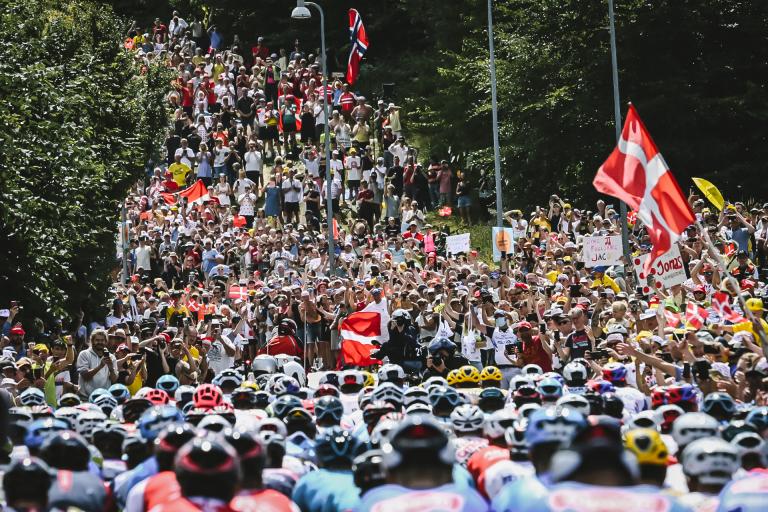
Le Tour in Denmark roundup: Fabio Jakobsen says admiration for Groenewegen is “completely gone”; Sagan blames Van Aert for bunch sprint near miss – and Ewan blames both of them; Magnus Cort – and Denmark – steal the show
The producers of the upcoming Netflix Tour de France documentary must be rubbing their hands with glee after the race’s opening three days in Denmark.
While the racing itself may not have lived up to its rather over-optimistic pre-Tour billing (the peloton could teach the fair fuel protesters a thing or two about organising a go-slow on a bridge), the storylines, off-bike drama and unbelievable atmosphere on the roads of Denmark more than made up for the mostly anaemic action.
Fabio Jakobsen’s victory on stage two into Nyborg, pipping Wout van Aert and home hero (and my pick for the stage) Mads Pedersen in the last 50 metres, was his Quick Step-Alpha Vinyl team’s second win in as many days, and vindicated – almost immediately – boss Patrick Lefevere’s decision to leave 34-time Tour stage winner Mark Cavendish at home.
More importantly, Jakobsen’s first win at the biggest bike race of them all capped off an incredible comeback for the burly Dutch sprinter – less than two years after he was placed in an induced coma following one of the sport’s most horrific crashes, at the Tour of Poland in August 2020, which left him with a fractured skull, brain contusion, broken nose, torn palate, and the loss of 10 teeth and parts of his upper and lower jaw.
That Jakobsen is alive and walking, never mind racing and winning on the biggest stage, is one of the great cycling stories of recent years.
Then, in a twist of fate only the Tour can seemingly supply, Dylan Groenewegen – the man deemed responsible for Jakobsen’s crash in Poland – secured his own moment of redemption the following day, once again edging out Van Aert in a tight photo finish in Sønderborg.
The BikeExchange rider served a nine month ban for his dangerous manoeuvre in Katowice, a move that shut the door on the Quick Step man (though one we see in countless sprints, it has to be said), sending him into barriers which were clearly not fit for purpose, and which exacerbated the horror and consequences of the incident.
Despite the clear safety issues surrounding that infamous downhill sprint in Katowice, Groenewegen says that he received death threats in the wake of the crash and has suffered from post-traumatic stress which even led him to consider quitting the sport.
His emotional win yesterday, then, is just as important as Jakobsen’s the day before, and will hopefully draw a line under the last two years for both riders.
However, Jakobsen still doesn’t appear in the mood to forgive and forget.
Speaking to the press outside his team bus, the Dutchman said of his compatriot’s win: “I think he shows that he’s a good sprinter and he can also win.
“I have to say, before the crash I admire his palmarès, and I kind of looked up to him a bit but now that is completely gone after the crash and the mistake he made.
“I think that’s normal. It’s nice for him to win but it doesn’t really affect me.”
Behind the leading Dutch pair, Jumbo-Visma’s ever-present Wout van Aert became the first rider since five-time Giro d’Italia winner Alfredo Binda in 1930 to finish second on each of the opening three stages of the Tour de France.
Well, that’s certainly one way of securing the green jersey…
Van Aert, however, came under fire from a finger-wagging Peter Sagan (a rider well-accustomed to a bit of pushing and shoving in a sprint), who said he was “happy I’m still in one piece” after an alleged deviation from the Belgian star boxed him in by the barriers.
Caleb Ewan, meanwhile, blamed both Sagan and Van Aert for the chaotic finish.
“They started sprinting in the middle of the road and the right side was free, so I decided to go to the right side and then they all moved to the right side,” the Australian, who has endured an underwhelming start to this year's Tour, said at the finish.
“I think it started with Van Aert and then Sagan made a bit more of a dramatic swing to the right.
“I was definitely squeezed. If I kept sprinting and I didn’t break and then I ran into the barrier then of course something would happen. The rules are always interpreted differently. Some races they will get disqualified and some races they won’t get disqualified.
“Who knows what the rules are, but they sprinted off their line. That’s sprinting, and there are always riders going off their line.”
In any case, the star of the Grand Départ – beyond the frenetic finishes and post-stage accusations – was without a doubt Denmark. The whole country (which has a population of just under six million people) appeared to be out in force on the side of the road, and in full voice, for one of the most spectacular and joyous starts to the Tour de France ever.
The crowds, dare I say it, were even better than those in Yorkshire eight years ago (ducks for cover...).
Every great audience, of course, needs a great showman… And that’s where Magnus Cort duly obliged, riding solo yesterday (in the polka dot jersey he earned in the previous day’s break) to a rapturous reception from his home fans, on a day the EF Education-EasyPost rider will surely never forget.
Now that’s what you call a Grand Départ.
Image Credits – Pauline Ballet and Charly Lopez, ASO
04 July 2022, 09:33
04 July 2022, 08:58
“This guy is a danger on the road”: Active travel advocates slam phone-driving fuel ‘go slow’ lorry driver
Fuel protest ‘go slow’ on the M4. I’m in a van with protester Richard Dite who is leading a 30mph procession of vehicles as his horn blares the Pirates of the Caribbean theme. We’re approaching the M4 Severn Bridge. pic.twitter.com/tcztcJXTG4
— Conor Gogarty (@ConorGogarty) July 4, 2022
‘Go-slow’ protests have taken place this morning on the M4 and M5 in Wales and the southwest of England, as part of a demonstration over high fuel prices.
According to Fair Fuel UK’s head honcho, and road.cc favourite, Howard Cox, the protesters are mostly targeting three-lane motorways, reducing the speed to 30mph on two lanes while allegedly leaving the outer lane free.
Judging by this series of videos – taken by WalesOnline reporter Conor Gogarty as he travelled with demonstrator and lorry driver Richard Dite this morning – the protest also apparently involved using your phone liberally while driving, driving without a seatbelt on, driving while conducting full conversations with fellow motorists in the next lane, and failing to pay attention to which junction you were supposed to take…
The M4 protest over fuel costs is onto the Severn Bridge. Language warning. pic.twitter.com/zKIsYZFCnz
— Conor Gogarty (@ConorGogarty) July 4, 2022
using a phone while driving, no seatbelt, bet he complains about insulate britain holding up ambulances too
— uefa maffia (@Poch5ever) July 4, 2022
This guy was probably puce-faced with rage at the Insulate Britain motorway protests. What an absolute turnip.
— UK Garage Fan (@ukgaragefan) July 4, 2022
Professional drivers, eh?
Not in full control of their vehicle, driving while operating a hand held mobile phone, failing to move left after overtaking.
Should have this one off the roads soon. Won’t need to worry about diesel prices when he’s riding a bike.— Rich Warner (@rgwarner) July 4, 2022
This guy is a danger on the road. Please submit your video evidence so that the police can prosecute him for dangerous driving whilst using a phone.
— John Moore (@john_r_moore) July 4, 2022
And a wasted tankful of fuel
— Alan 💙 (@Vafuncullo) July 4, 2022
Dite also told the reporter that he had been expecting “hundreds of protesters” to join the procession this morning.
Six turned up instead…
Oops.
04 July 2022, 08:39
Tour de France teams, journalists and fans offer condolences following Copenhagen shooting
Teams and journalists at the Tour de France have offered condolences and messages of support after a gunman killed three people, and injured another four, in a shopping centre in Copenhagen, less than 48 hours after the city hosted a spectacular, joyful and heart-warming Grand Depart for the race:
We had the warmest welcome & most spectacular few days in Denmark & are deeply saddened by the news in Copenhagen. Our sincere condolences go out to the victims and their families. https://t.co/ErTFVe1Ewg
— Team BikeExchange-Jayco (@GreenEDGEteam) July 4, 2022
Making way to Copenhagen airport after stage 3 of @LeTour. So sad to read about tragic events there earlier this evening. Fans lining the roads over the last three days helped create a wonderful, positive atmosphere and image of Denmark https://t.co/hDFmb5JBdX
— Tom Cary (@tomcary_tel) July 3, 2022
It’s so sad to hear the news of what happened in Copenhagen. I’ve spent the last 3 days here at the Tour and had an amazing time. Denmark is such a beautiful country and every single person I have met has been so nice. My thoughts go out to everyone involved x https://t.co/Eme6POHNjf
— Cameron Jeffers (@Cameron_Jeffers) July 3, 2022
The world we live in is both wonderful and ghastly. I wish we had avoided this reminder at the Tour - but we all live in the real world. An affront to Copenhagen. A true, real sadness. 🇩🇰
— Ned Boulting 🇫🇷 🚲 (@nedboulting) July 3, 2022
My heart breaks for Copenhagen - to go from the most wonderful celebration of unity and joy to this in just a couple of short days is shocking and tragic 💔 Just no words.
— Katy Madgwicksen - Tour mode engaged! 🇩🇰🚲 (@writebikerepeat) July 3, 2022
All through the weekend I have been amazed and so proud of my country. We managed to pull off Tour De France.
And today we stand together in sadness as we are shaken by a shooting in Copenhagen. Thoughts and prayers go out to everyone involved. #Denmark #letourdk pic.twitter.com/MkdqsqgnPF
— TemplarDrake (@TemplarDrake89) July 4, 2022
The thoughts of everyone at road.cc are with those impacted by this tragedy and all of Denmark.
After obtaining a PhD, lecturing, and hosting a history podcast at Queen’s University Belfast, Ryan joined road.cc in December 2021 and since then has kept the site’s readers and listeners informed and enthralled (well at least occasionally) on news, the live blog, and the road.cc Podcast. After boarding a wrong bus at the world championships and ruining a good pair of jeans at the cyclocross, he now serves as road.cc’s senior news writer. Before his foray into cycling journalism, he wallowed in the equally pitiless world of academia, where he wrote a book about Victorian politics and droned on about cycling and bikes to classes of bored students (while taking every chance he could get to talk about cycling in print or on the radio). He can be found riding his bike very slowly around the narrow, scenic country lanes of Co. Down.
Add new comment
30 comments

ktache
|
2 years ago
2 likes

GMBasix
|
2 years ago
4 likes


redimp
|
2 years ago
6 likes
Julia Hartley-Brewer: “Insulate Britain are middle-class hypocrites" says Howard Cox - YouTube

chrisonabike
|
2 years ago
2 likes
I'm delighted to see our motorist overlords yet again paying the world of cycling a compliment by copying it. Reclaim the streets from for these large, often mostly empty vehicles! Stop subsidising overtaxing drivers to exercise their freedoms on the purpose-built infra!


He was wearing seatbelt in all the vids* I have seen both listed above and others in the Twitter timeline. Although if Priti's new rules on protests means the protestor in London gets his sound system taken away, does he get his van confiscated with that atrocious horn?
* even the current pinned pic shows his seatbelt on (black line in top right just above shoulder.


Secret_squirrel
|
2 years ago
15 likes
Indeed. Do you know what would have an immediate and material impact on the amount of fuel we import including those terrible Russians? Immediate draconian-ly enforced 60mph limit on all dual carraigeways and motorways.
There's almost a 30% improvement in fuel economy between 80 and 60 mph.
Thats probably a 10-20% drop in many drivers fuel bills too.


Agreed, it makes a huge difference, I've been experimenting with lower average speeds on the school run the past couple of weeks. A temporary cut to the national speed limit from 60mph to 50mph would yield 15-20% cuts in fuel consumption. The beauty of this approach is that no new signage would be required, and it would end up being self-enforcing as on most NSL roads it's tricky to overtake and so you just need a couple of drivers obeying the law to slow the entire flow.
I'm sure it's confirmation bias but it does feel like average speeds have dropped in the past month, I'm certainly not getting overtaken/tailgated when I'm driving below the limit. Most of my driving is on 50/60mph roads and driving those at 45/52 cuts 15% off my petrol usage (1l turbo Euro6 car)




Mungecrundle
|
2 years ago
9 likes
Why not just go park up at fuel station forecourts where the price is over £2 litre? I can think of any number of legal ways to leave a car at a pump for 20 minutes. From struggling with a stuck fuel cap, to browsing the crisp selections, taking a dump, only having a credit card that you forgot you cancelled, misplacing the keys etc...
Target the fuel retailers directly rather than burning fuel in a moving protest.



AlsoSomniloquism
|
2 years ago
10 likes
I did wonder why driving slow and wasting fuel was planned in protest about high fuel costs. They could have slowed everyone to 55 to have the protest AND also manintained a good fuel economy. But then letting himself be filmed using a mobile twice shows the idiots in charge.



Latest Comments
- David9694 4 min 45 sec ago
Those psychological price-points play their part - over £500, over £1000, I guess part of this is what you deem to be "expensive" or "acceptable",...
- Dnnnnnn 39 min 5 sec ago
Where did you find that? I've never seen figures below regional level (London being the only UK city which is also classed as a region). I'm not...
- wtjs 1 hour 1 min ago
Appears that the scheme installation has now been paused Sad news! I hope the council acts against the baying mob.
- Laz 1 hour 34 min ago
I want to say, wow! holy cow ! seriously, it is very interesting to read this. So, I wonder if they are just buying this stuff off the shelf ie...
- Muddy Ford 1 hour 46 min ago
If the bike owner starts a crowdfund thing to help the security guard cover his costs etc. whilst he will undoubdtedly be off work, I'll contribute...
- Laz 1 hour 54 min ago
I ask that you keep it on the down-low, I really dont want my local politicans to find out....thx
- David9694 3 hours 18 min ago
Another Driverless car - oh. ...
- Zebra 3 hours 48 min ago
Actually, having recently bought a cheaper, new helmet to replace a more expensive (but cracked) one, I would say that more expensive is better. ...
- bobrayner 9 hours 22 min ago
It's a lot of money for a simple-looking little tool, but I've been very happy with previous Dynaplugs - they are super effective.




